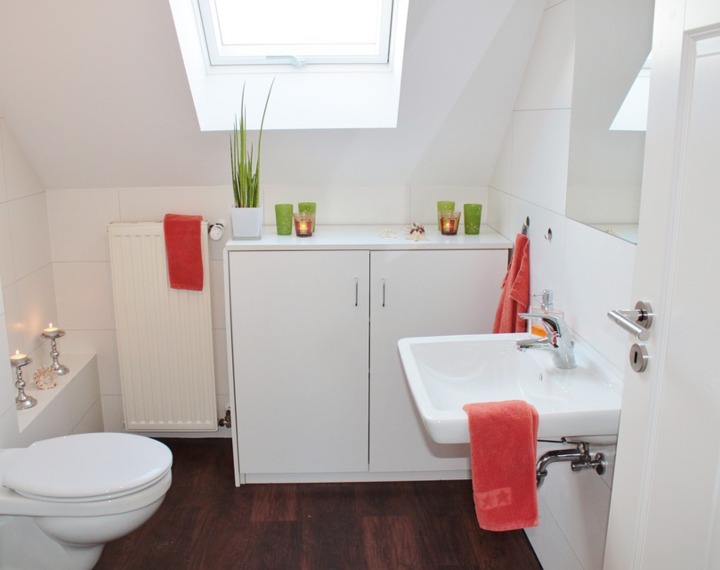Clean Toilets: How Important Are They?
 Whether you run a care home, day care centre, or another social care facility it’s essential that you understand the importance of keeping toilets clean.
Whether you run a care home, day care centre, or another social care facility it’s essential that you understand the importance of keeping toilets clean.
What is the impact of unhygienic toilets?
A recent YouGov survey of over 2000 people found that dirty and unsanitary bathrooms put people off of returning to the same place again, which means that if your facility's bathrooms aren’t kept clean, you might lose customers as a result. There’s also a chance that your care facility will get a poor rating during a Care Quality Commission check if the bathroom facilities are found to be unclean and unsafe as a result.
What this survey also found was that when coming across a dirty bathroom, 85% of people warn their friends and family about the poor condition of the facilities, with 76% of those people put off by what they are told. This is a worrying statistic because all it takes is one bad review of your care facility and you could be at risk of losing a large amount of potential customers. You may even lose some of your current customers if the families of your residents hear about the poor conditions and decide to move them to another facility.
What this new research revealed is that British people are ‘sticklers’ for bathroom hygiene, with many people taking extra precautions to avoid coming in contact with germs. When toilet facilities lack hygiene, 24% of people choose to lay toilet paper on seats, 29% choose to squat above the toilet, and 21% opt to use elbows or paper towels to open doors.
What are the biggest concerns regarding toilet cleanliness? Cleanliness itself is an issue for 90% of people, while a lack of toilet paper is a problem for 89%, and a lack of soap puts 70% of people off of returning to a toilet again, bad smells put 63% of people off of returning to the same bathroom again.
If a facility, such as a car facility lacks hygienic toilets, 97% of people would be put off of returning there again, with 85% of people choosing to warn friends and family about the problem. The survey also revealed that over three-quarters of people would be put off of visiting somewhere if a friend or family member told them that the toilets were dirty or unclean.
This study also showed that most people would rather not keep these kinds of problems to themselves and 60% said that they would bring the issue up with staff directly, while a quarter would make a complaint via social media.
What can care sector facilities do to ensure that their bathrooms remain hygienic?
Set a regular cleaning rota and perform checks
One of the most important things that care facilities can do to ensure that their bathrooms for visitor use are kept clean is to establish a regular cleaning schedule and perform checks between cleans. It’s also important that the cleaning processes in place allow cleaners to give each bathroom a deep clean, ensuring that all dirt and odour is removed at each cleaning session. A step by step cleaning plan for cleaners to follow combined with having access to all of the best cleaning materials and tools is essential. Providing adequate staff training is also important, to ensure that cleaning is performed to a high-quality and bathrooms are left in a hygienic state.
Provide hygienic tools for users
For many people, having access to hygienic tools makes the use of public bathrooms more enjoyable. When a bathroom feels like a hygienic space, it makes using it a less stressful experience. To ensure that your bathrooms are as hygienic as possible for your users, it’s a good idea to consider incorporating tools for hygiene, such as flushable toilet seat covers and antibacterial toilet wipes to remove germs from the toilet seat and flush before use.
Ensure antibacterial soap is available
Another essential step to take is to make sure that not only every bathroom is always stocked up with soap, but also that the soap being used is antibacterial and kills 99.9% of germs with each use. Bathroom users don’t want to use soap that doesn’t kill germs, so ensuring that there is an effective antibacterial soap in place is crucial.
Offer an alternative to hand dryers
A large percentage of people aren’t comfortable using hand dryers because they believe that they create more germs due to the warm air and spread them around. So it’s important that as well as offering hand dryers, your bathrooms also offer reusable paper towels as an alternative method of hand drying.
Combat bad odours
Bad odours can put people off of using a bathroom, which is why it’s important that as part of your bathroom hygiene practices that you combat bad odours. Using quality cleaning products can help to do this, which is why it’s important that you are selective about the cleaning products that you use.
At CLH, we have a wide range of commercial cleaning products that are designed to perfectly fit the needs of care environments, so it might be worth taking the time to have a look at our wide range of cleaning products.
In addition to using quality cleaning products, you might also want to consider adding air fresheners to your bathrooms, to help ensure that bad odours don’t linger. You can choose from a wide range of air fresheners, from free-standing designs to air fresheners that plugin or diffuse automatically at certain set times. Don’t choose overly scented air fresheners, as these simply mask the odour, look for air fresheners that actually disperse bad odours, instead of simply masking them.
There you have it, a guide to why clean toilets are important for your care environment and why it’s essential that you take bathroom hygiene seriously.





